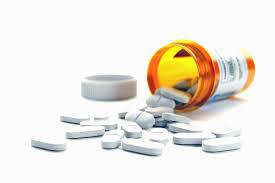Zolpidem vs Zopiclone: Which Sleeping Pill Is Stronger?

Zolpidem vs Zopiclone: Which One Is Stronger?
Insomnia is a widespread condition, affecting millions worldwide. When sleepless nights persist, doctors often prescribe short-term sleeping pills to restore rest. Two of the most common medications in this category are zolpidem (brand name Ambien in the US, Stilnox in some regions) and zopiclone (Imovane or Zimovane).
Both drugs belong to the “Z-drug” family—non-benzodiazepine hypnotics designed specifically for short-term insomnia treatment. Because they are often prescribed for similar issues, many people wonder: which one is stronger, zolpidem or zopiclone?
Let’s explore their similarities, differences, and effectiveness to find out.
What Is Zopiclone?
-
Drug class: Cyclopyrrolone hypnotic (Z-drug)
-
Approved use: Short-term treatment of insomnia
-
How it works: Enhances GABA activity in the brain (the neurotransmitter responsible for calming neural activity), leading to sedation, relaxation, and improved sleep onset.
-
Typical dose: 3.75–7.5 mg at bedtime
Zopiclone is often used in Europe, Canada, Australia, and other regions. It helps with both falling asleep and maintaining sleep. However, it carries risks of dependence, tolerance, and withdrawal if taken long-term.
What Is Zolpidem?
-
Drug class: Imidazopyridine hypnotic (Z-drug)
-
Approved use: Short-term treatment of insomnia
-
How it works: Like zopiclone, zolpidem enhances GABA signaling, but its binding is more selective, primarily affecting receptors that regulate sleep.
-
Typical dose: 5–10 mg at bedtime (sometimes extended-release forms are prescribed for sleep maintenance).
Zolpidem is more commonly prescribed in the United States and is considered a strong short-acting sleep aid.
Comparing Strength and Effectiveness
1. Onset of Action
-
Zolpidem: Works quickly, usually within 15–30 minutes. Ideal for people who have trouble falling asleep.
-
Zopiclone: Also acts fairly fast, but onset may take 30–60 minutes, making it slightly slower than zolpidem.
Winner: Zolpidem is faster-acting.
2. Duration of Effect
-
Zolpidem: Standard formulations last 3–4 hours. Extended-release tablets can last 6–8 hours, but may increase risk of next-day drowsiness.
-
Zopiclone: Lasts around 6–8 hours, making it better for people who wake up often during the night.
Winner: Zopiclone is longer-lasting.
3. Strength in Promoting Sleep
-
Zolpidem: Considered stronger at initiating sleep due to rapid action.
-
Zopiclone: Provides steadier sedation through the night, though some users feel it is “milder” compared to zolpidem in terms of sleep onset.
Result: Zolpidem is stronger for falling asleep, but zopiclone may be stronger for staying asleep.
4. Side Effects
Both drugs share common side effects such as drowsiness, dizziness, headache, and dry mouth. However, they differ in some respects:
-
Zopiclone: Often causes a bitter or metallic aftertaste the next day. Can also cause grogginess in the morning.
-
Zolpidem: More associated with sleepwalking, sleep-eating, and even sleep-driving. Has a higher risk of unusual behaviors and amnesia.
5. Risk of Dependence
Both carry risk, but:
-
Zopiclone: Considered moderately addictive if taken beyond recommended 2–4 weeks.
-
Zolpidem: Evidence suggests it may have a higher risk of dependence and misuse, partly because of its strong, fast action.
Winner (safer in dependence): Zopiclone.
Which Is Safer?
-
For falling asleep quickly, zolpidem is more effective but also riskier due to potential side effects and addictive potential.
-
For maintaining sleep through the night, zopiclone works better but can leave a bitter taste or mild grogginess.
Doctors typically prescribe one over the other based on a patient’s specific sleep problem:
-
Difficulty falling asleep only? → Zolpidem may be chosen.
-
Trouble staying asleep? → Zopiclone is often preferred.
Alternatives to Both
Because of the risks, guidelines often recommend non-drug therapies first, like:
-
Cognitive Behavioral Therapy for Insomnia (CBT-I): Proven most effective long-term.
-
Lifestyle changes: Consistent sleep schedule, limiting caffeine/alcohol, screen-free wind-down.
-
Other medications: Orexin antagonists (like daridorexant or lemborexant), melatonin, or certain antidepressants (for comorbid anxiety/depression).
Key Takeaway
So, which is stronger—zolpidem or zopiclone?
-
Zolpidem is stronger for initiating sleep—it works quickly and is very effective in the short term.
-
Zopiclone is stronger for maintaining sleep, providing longer coverage through the night.
-
Both drugs should only be used short-term, due to risks of dependence, side effects, and withdrawal.
The choice depends on your specific sleep problem, overall health, and doctor’s guidance.
Final Verdict:
-
Need to fall asleep fast? → Zolpidem.
-
Need to stay asleep longer? → Zopiclone.
But neither is a cure. For lasting relief, consider CBT-I and healthier sleep strategies.
- Art
- Causes
- Crafts
- Dance
- Drinks
- Film
- Fitness
- Food
- Jeux
- Gardening
- Health
- Domicile
- Literature
- Music
- Networking
- Autre
- Party
- Religion
- Shopping
- Sports
- Theater
- Wellness


